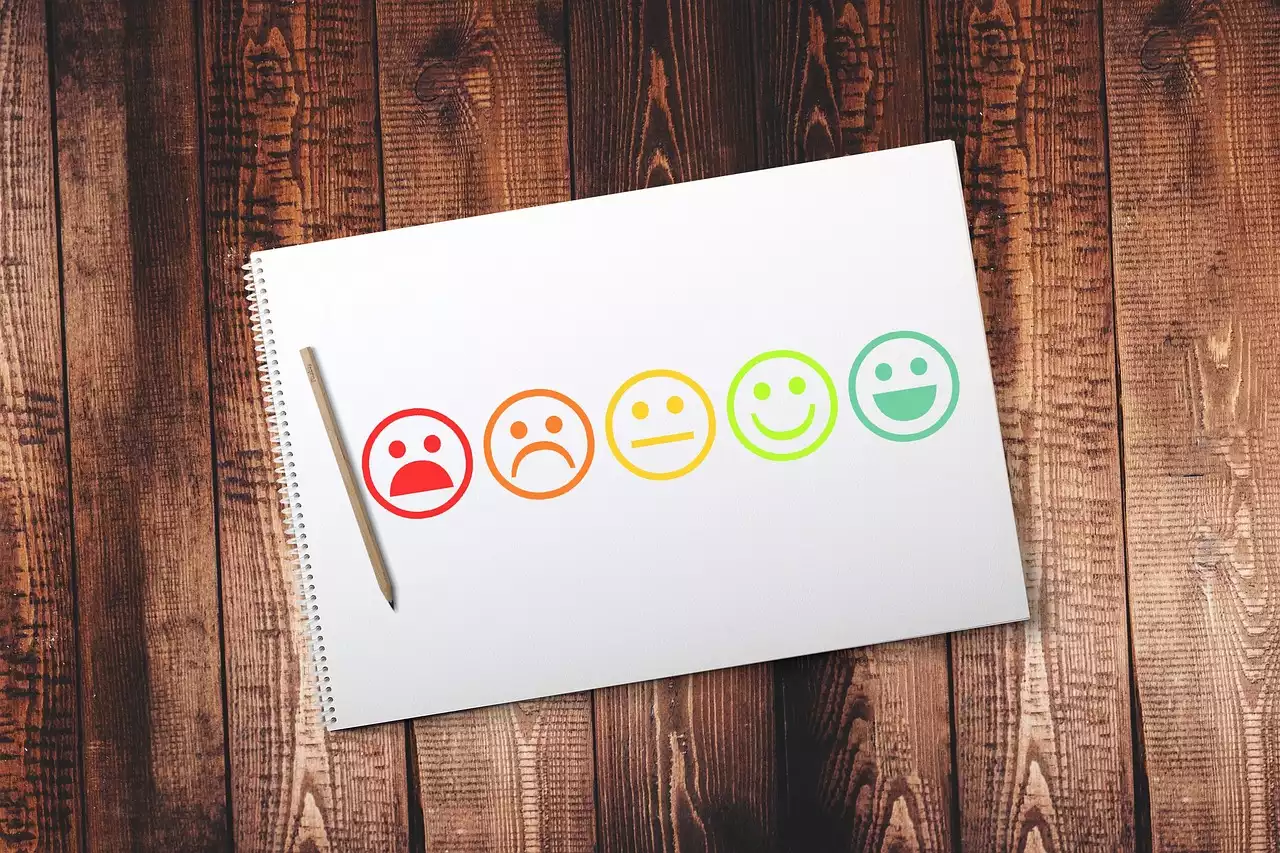Importance of CRO for businesses
Conversion rate optimization (CRO) is the process of optimizing your website or landing page to increase conversions. It's an essential aspect of digital marketing that can help businesses boost their revenue and profitability. CRO is all about understanding your audience, identifying what motivates them, and creating a user experience that addresses their needs.
According to a recent study, the average conversion rate for e-commerce sites is around 2.86%. That means that for every 100 visitors, only 2 or 3 will make a purchase. By implementing effective CRO strategies, businesses can increase their conversion rates and generate more revenue from their existing traffic.
One of the biggest advantages of CRO is that it allows you to make data-driven decisions. By analyzing your website's metrics and user behavior, you can identify areas for improvement and make targeted changes that can result in significant improvements in your conversion rates.
Understanding your audience and their behavior
The first step in developing a successful CRO strategy is to understand your audience and their behavior. You need to know who your target audience is, what motivates them, and what their pain points are. You can gather this information through customer surveys, focus groups, and website analytics.
Website analytics is a crucial tool for understanding your audience's behavior. Tools like Google Analytics can provide you with valuable insights into how users interact with your website. You can track metrics like bounce rate, time on site, and pages per session to get a better understanding of how users are engaging with your content.
By analyzing these metrics, you can identify areas where users are dropping off or losing interest. For example, if you notice that users are leaving your site after only a few seconds, it could be an indication that your homepage is not engaging enough. On the other hand, if users are spending a lot of time on a particular page, it could be a sign that the content is resonating with them.
Analyzing your website's metrics
Once you have a clear understanding of your audience and their behavior, it's time to start analyzing your website's metrics. This involves tracking key performance indicators (KPIs) that can help you measure the effectiveness of your CRO efforts.
Some of the most important KPIs to track include:
- Conversion rate: This is the percentage of visitors who take a desired action, such as making a purchase or filling out a form.
- Bounce rate: This is the percentage of visitors who leave your site after only viewing one page.
- Average time on site: This is the average amount of time that visitors spend on your site.
- Pages per session: This is the average number of pages that visitors view during a single session.
By tracking these metrics over time, you can identify trends and patterns that can help you optimize your website for maximum conversions.
Identifying areas for improvement
Once you have a clear understanding of your audience and your website's metrics, it's time to start identifying areas for improvement. This involves conducting a thorough audit of your website to identify any issues or obstacles that may be preventing users from converting.
Some common areas for improvement include:
- Website design: Is your website design modern, clean, and easy to navigate? Does it reflect your brand identity and messaging?
- Content: Is your content engaging, informative, and persuasive? Does it address your audience's pain points and provide solutions to their problems?
- Call to action (CTA): Are your CTAs prominent, clear, and compelling? Do they encourage users to take action?
- User experience: Is your website easy to use and navigate? Is it optimized for mobile devices?
- Page load speed: Is your website fast and responsive? Slow load times can significantly impact your conversion rates.
By identifying these areas for improvement, you can develop a targeted CRO strategy that addresses these issues and improves your website's overall user experience.
Developing a CRO strategy
Once you have identified areas for improvement, it's time to develop a CRO strategy. This involves creating a plan of action that outlines the specific changes and optimizations you will make to your website.
Some key elements of a successful CRO strategy include:
- Goals: What specific goals do you want to achieve through your CRO efforts? Do you want to increase your conversion rate, generate more leads, or improve customer retention?
- Target audience: Who is your target audience, and what motivates them? How can you create a user experience that addresses their needs and pain points?
- Hypotheses: What specific changes do you think will improve your website's conversion rate? For example, you may hypothesize that changing your CTA button color from blue to red will increase conversions.
- Testing plan: How will you test your hypotheses? A/B testing is a popular method for testing different variations of a page to see which one performs better.
- Implementation plan: How will you implement the changes and optimizations identified in your testing plan?
By developing a comprehensive CRO strategy, you can ensure that your efforts are targeted and effective.
Implementing CRO techniques - A/B testing, heat maps, and user feedback
Once you have developed a CRO strategy, it's time to start implementing specific techniques and tactics that can help you achieve your goals. A/B testing is one of the most popular and effective CRO techniques. It involves creating two versions of a page and randomly showing each version to users to see which one performs better.
Heat maps are another valuable tool for CRO. They allow you to see exactly where users are clicking, scrolling, and spending time on your website. This can help you identify areas that are working well and areas that may need improvement.
User feedback is also essential for CRO. You can gather feedback through surveys, focus groups, and user testing. This can provide you with valuable insights into how users perceive your website and what changes they would like to see.
Case study 1: How Company X increased their conversion rate by 25%
Company X is a leading e-commerce retailer that sells clothing and accessories. They were struggling to convert visitors into customers, with a conversion rate of only 1.5%. They decided to implement a comprehensive CRO strategy that included A/B testing, heat maps, and user feedback.
Through A/B testing, they discovered that changing the color of their CTA button from blue to orange resulted in a 25% increase in conversions. Heat maps revealed that users were spending a lot of time on the product pages, but were abandoning their carts at checkout. By optimizing the checkout process and simplifying the form fields, they were able to reduce cart abandonment and increase their conversion rate.
User feedback also played a crucial role in their CRO efforts. They discovered that many users were confused by their shipping policies and were abandoning their carts because they didn't understand the shipping costs. By providing more transparent and upfront shipping costs, they were able to improve customer satisfaction and increase conversions.
Case study 2: How Company Y optimized their landing page and saw a 40% increase in leads
Company Y is a B2B software provider that offers a suite of productivity tools. They were struggling to generate leads through their landing page, with a conversion rate of only 2%. They decided to implement a CRO strategy that focused on optimizing their landing page.
Through A/B testing, they discovered that changing the headline of their landing page from "Boost Your Productivity" to "Get More Done in Less Time" resulted in a 40% increase in leads. They also optimized the form fields on their landing page, reducing the number of required fields from six to three. This simplified the process for users and resulted in a significant increase in conversions.
Lessons learned and key takeaways
The case studies highlighted in this article demonstrate the power of CRO and the impact it can have on your business. By understanding your audience, analyzing your website's metrics, and developing a targeted CRO strategy, you can improve your website's user experience and increase your conversion rates.
Some key takeaways from these case studies include:
- A/B testing is a powerful tool for optimizing your website and increasing conversions.
- Heat maps can provide valuable insights into how users are engaging with your website.
- User feedback is essential for understanding your audience's needs and pain points.
- Optimizing your website's checkout process can reduce cart abandonment and increase conversions.
- Simplifying your landing page and form fields can significantly improve your conversion rates.
The case studies highlighted in this article demonstrate the power of CRO and the impact it can have on your business. By implementing proven strategies and techniques, you can transform your website into a conversion machine and generate more revenue from your existing traffic. So, start implementing these CRO strategies today and see the results for yourself!








.png?size=50)

